[ad_1]
Nothing short of rapid transformation of Irelandâs energy, food and transport systems is required âto shift our society on to a sustainable trajectoryâ, according to the 2024 State of the Environment report.
âIt is imperative that substantial investments in key infrastructure prioritise environmental protection as a cornerstone of Irelandâs future development,â the report from the Environmental Protection Agency (EPA) published on Thursday states.
It finds policies, plans and regulations are having a positive but limited impact and âentirely inadequate to deliver a healthy environmentâ.
The latest four-year assessment issued by the EPA collates unprecedented amounts of data, and provides detailed analysis on key environmental themes including performance on implementing policy. These include:
Nature/biodiversity: The challenges of protecting the wide diversity of Irelandâs habitats and species are now more serious than ever. âThe quality of natural habitats and the species they support are declining … continuing with a âbusiness-as-usual approachâ will mean nature and our wild places will continue to fragment and biodiversity will continue to decline.â
To change the current unsustainable path will require consideration of biodiversity at every step of development and in sectoral plans and policies â âa whole-of-Government, whole-of-society approach to managing and protecting biodiversityâ.
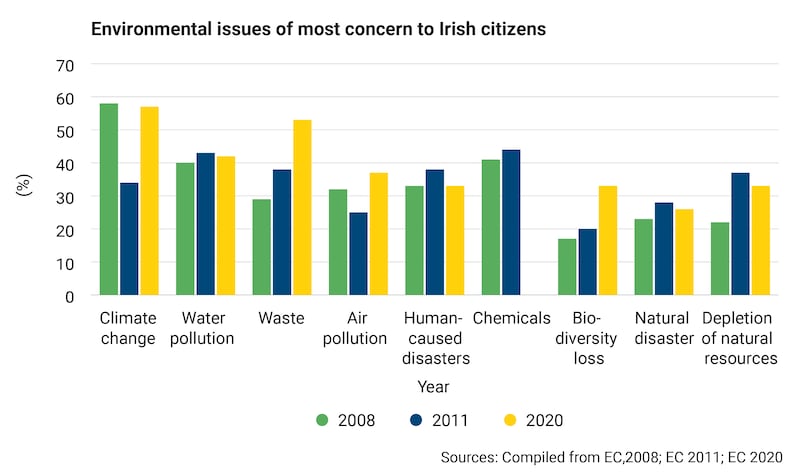
Agriculture: Farming is an integral part of the fabric of Irish society with a key role in delivering a healthy environment. However, food systems which depend on a healthy environment are not meeting sustainability targets. Many plans and programmes are in place with positive actions at farm-scale, âbut there is no clear evidence current measures will collectively achieve the scale of environmental outcomes that are neededâ.
Soil: The health of soils must be prioritised to ensure food security and safeguard its âenvironmental servicesâ. Mapping and assessing soil health needs to be scaled up, given threats from excess nutrients, compaction and lack of soil biodiversity.
Land use: Co-ordination and collaboration on land use is urgently needed, so it stores carbon and âprovides the food, energy and materials we depend on while also regenerating the quality of our natural environment. This will require sustained engagement with landowners to develop a vision that achieves this and adequate support to make it happen.â
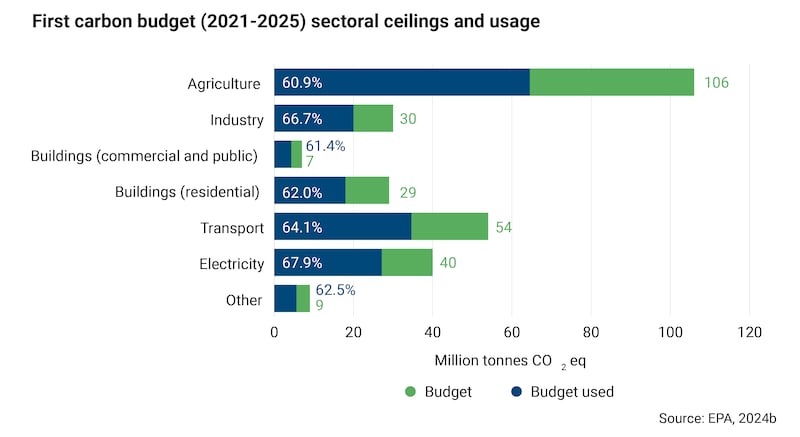
Climate action: A rapid increase in electric generation from renewables and early signs of increases in public transport use indicate progress but we are significantly off track to meet national and EU targets for cutting emissions. Early and rapid global action on emissions reductions is likely to leave an Irish climate that, by 2100, is still broadly recognisable in comparison with today, it says. âOn the other hand, delaying action is very likely to result in an Irish climate that will become increasingly unrecognisable as the century progresses.â
Energy: Wind energy, solar and bioenergy will be key to delivering short-term emission reductions, whereas offshore wind will become the key essential element of future energy use. âEnhanced regulatory and planning frameworks, and support schemes, are required to accelerate deployment of renewables, realise co-benefits and manage trade-offs.â
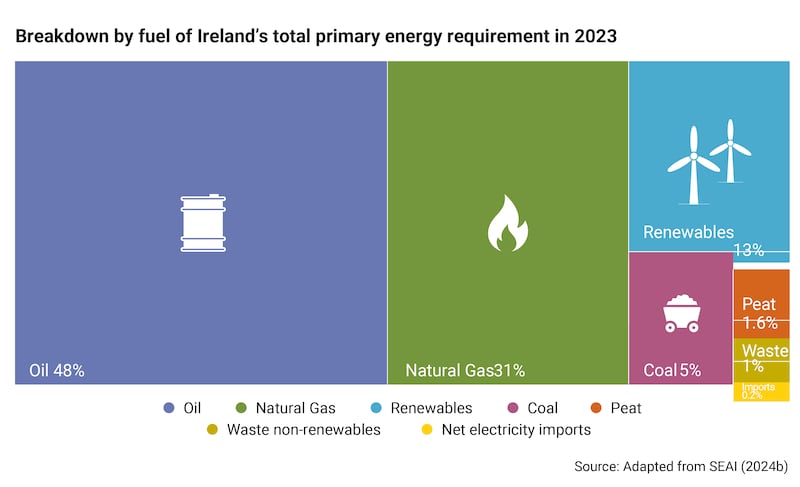
Growing electricity demand will result from electrification of the heat and transport sectors, while âadditional and rapidly increasing demandâ from large users will exert even more pressure on the grid.
Water quality: Water quality is not complying sufficiently with the EU Water Framework Directive and nutrient trends in water are not improving. Bathing water quality is of high quality but Ireland has persistently high levels of the E.coli strain known as STEC/VTEC which causes severe illness.
Transport: The sector is a major consumer of energy and material resources, and a source of environmental pollution, particularly greenhouse gases, air pollutants and noise. A sustainable, accessible and efficient transport system is not only important for the environment and wellbeing but is also a key enabler for the economy.
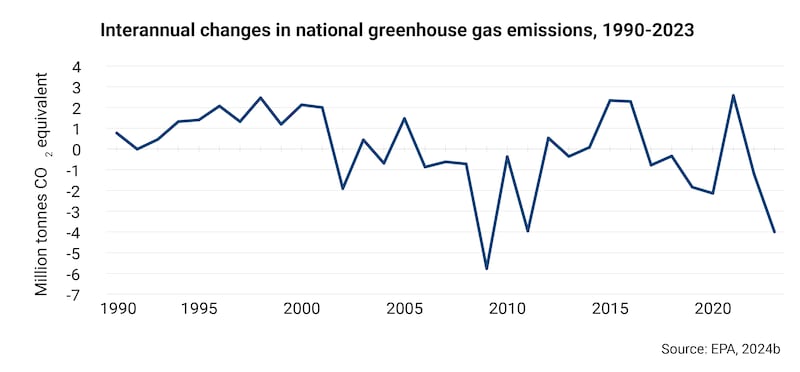
Integration of land use planning and transport planning is needed to achieve more compact development, incentivise moves away from private cars and move trips to rail, bus, cycling and walking. Shifting to these modes is essential for âa sustainable and climate-neutral transitionâ.
Industry: Industrial pollution is decreasing. Compliance with environmental regulation is high overall. However, a disproportionate number of sites in the food and drink sector, most notably dairy processing, and the waste sector âare not performing optimallyâ.
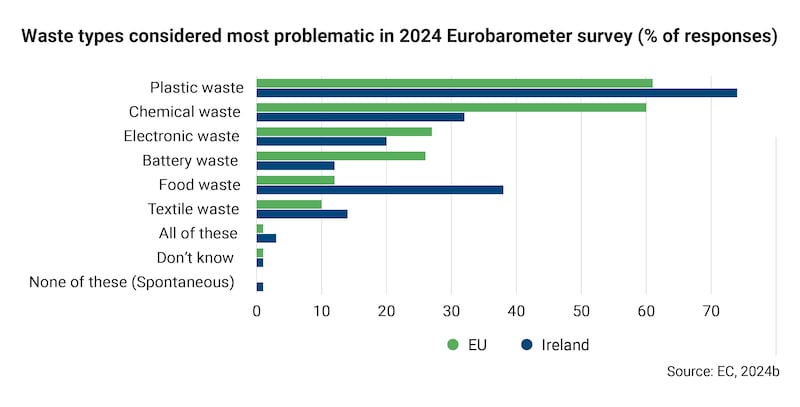
Circular activities: Consumption of material resources is rising, and our recycling rates are not keeping pace, making it likely Ireland will not comply with EU targets.
Marine: The marine environment is healthy but coherence on policies is needed to ensure sustainable use of Irelandâs maritime area occurs without adverse impacts. Policy measures on developing offshore renewables and a target to protect 30 per cent of marine waters âneed to be properly and quickly alignedâ. While developments in spatial planning are progressing, Marine Protected Areas (MPA) legislation has been repeatedly delayed.
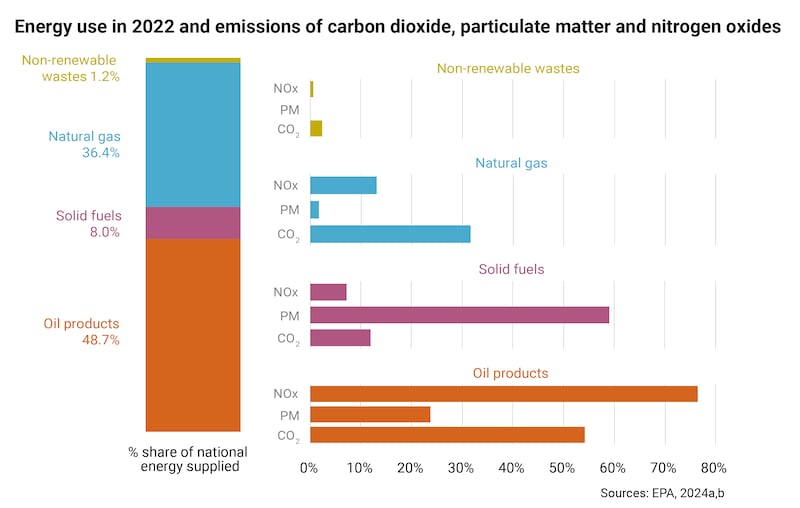
Health: The report highlights the absolute link between protecting our environment and protecting our health â âharm one and we harm the otherâ. Addressing harmful exposures (air pollution, radon, noise) and adapting to and mitigating climate impacts âwill have a substantial benefit to our health and wellbeing and our environmentâ.
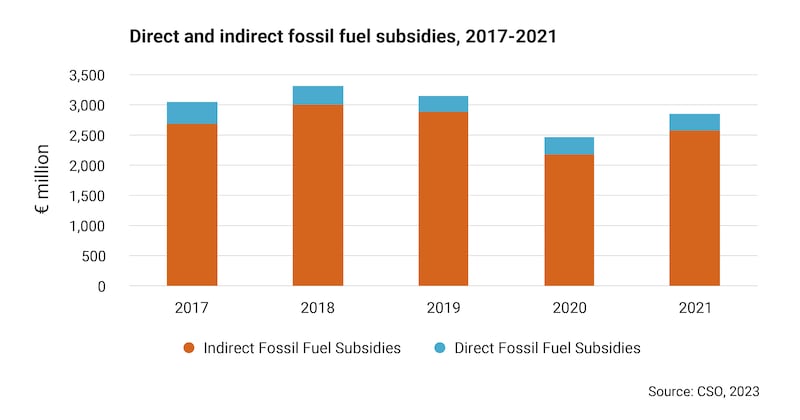
The EPA review underlines the need for collective action throughout society and public understanding of and support for what is required to ensure effective actions, given âthe complex interactions between different activities across the economy that combine to worsen environmental pressuresâ.
âWhat is now needed is a strategic leap, a shared vision for how we will adapt our lives and work to protect our own existence within the next decade, and a national environmental policy statement that articulates and drives this transition,â said EPA director general Laura Burke.
Current progress was nowhere near good enough, she said. âWe are always playing catch-up. We now have virtually no seriously polluted rivers, but we have hardly any pristine ones left, either. We now recycle more, but produce more waste than ever and export much of it.â
[ad_2]
Source link


